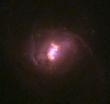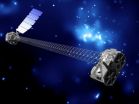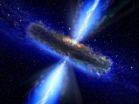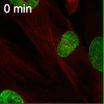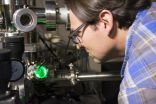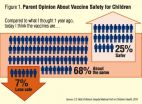Universe's hidden supermassive black holes revealed
2015-07-06
(Press-News.org) Astronomers have found evidence for a large population of hidden supermassive black holes in the Universe.
Using NASA's Nuclear Spectroscopic Telescope Array (NuSTAR) satellite observatory, the team of international scientists detected the high-energy x-rays from five supermassive black holes previously clouded from direct view by dust and gas.
The research, led by astronomers at Durham University, UK, supports the theory that potentially millions more supermassive black holes exist in the Universe, but are hidden from view.
The findings are being presented at the Royal Astronomical Society's National Astronomy Meeting, in Llandudno, Wales, today (Monday, July 6, 2015).
The scientists pointed NuSTAR at nine candidate hidden supermassive black holes that were thought to be extremely active at the centre of galaxies, but where the full extent of this activity was potentially obscured from view.
High-energy x-rays found for five of the black holes confirmed that they had been hidden by dust and gas. The five were much brighter and more active than previously thought as they rapidly feasted on surrounding material and emitted large amounts of radiation.
Such observations were not possible before NuSTAR, which launched in 2012 and is able to detect much higher energy x-rays than previous satellite observatories.
Lead author George Lansbury, a postgraduate student in the Centre for Extragalactic Astronomy, at Durham University, said: "For a long time we have known about supermassive black holes that are not obscured by dust and gas, but we suspected that many more were hidden from our view.
"Thanks to NuSTAR for the first time we have been able to clearly see these hidden monsters that are predicted to be there, but have previously been elusive because of their 'buried' state.
"Although we have only detected five of these hidden supermassive black holes, when we extrapolate our results across the whole Universe then the predicted numbers are huge and in agreement with what we would expect to see."
Daniel Stern, the project scientist for NuSTAR at NASA's Jet Propulsion Laboratory in Pasadena, California, added: "High-energy X-rays are more penetrating than low-energy X-rays, so we can see deeper into the gas burying the black holes. NuSTAR allows us to see how big the hidden monsters are and is helping us learn why only some black holes appear obscured."
The research was funded by the Science and Technology Facilities Council (STFC) and has been accepted for publication in The Astrophysical Journal.
INFORMATION:
ELSE PRESS RELEASES FROM THIS DATE:
2015-07-06
For cell division to be successful, pairs of chromosomes have to line up just right before being swept into their new cells, like the opening of a theater curtain. They accomplish this feat in part thanks to structures called centrioles that provide an anchor for the curtain's ropes. Researchers at Johns Hopkins recently learned that most cells will not divide without centrioles, and they found out why: A protein called p53, already known to prevent cell division for other reasons, also monitors centriole numbers to prevent potentially disastrous cell divisions.
Details ...
2015-07-06
Richland, Wash. -- Despite decades of industrial use, the exact chemical transformations occurring within zeolites, a common material used in the conversion of oil to gasoline, remain poorly understood. Now scientists have found a way to locate--with atomic precision--spots within the material where chemical reactions take place, and how these spots shut down.
Called active sites, the spots help rip apart and rearrange molecules as they pass through nanometer-sized channels, like an assembly line in a factory. A process called steaming causes these active sites to cluster, ...
2015-07-06
Anti-inflammatory drug is one thousandth of the cost of the current drug which works in the same way
Discovery may open up cost effective treatment options not just for the NHS but also cancer patients across the world
Scientists at the University of Sheffield have discovered that a common drug given to arthritis sufferers could also help to treat patients with blood cancers.
Myeloproliferative neoplasms (MPN) are diagnosed in around 3,300 UK patients every year and cause an overproduction of blood cells creating a significant impact on quality-of-life, with symptoms ...
2015-07-06
ANN ARBOR, Mich. -- Over the same time period that multiple outbreaks of measles and whooping cough made headlines around the country, parents' views on vaccines became more favorable, according to a new nationally-representative poll.
The University of Michigan C.S. Mott Children's Hospital National Poll on Children's Health asked parents in May how their views on vaccinations changed between 2014 and 2015 - during which two dozen measles outbreaks were reported in the U.S., including a multi-state outbreak traced to Disneyland.
One-third of parents who participated ...
2015-07-06
A spider's web is one of the most intricate constructions in nature, but its precious silk has more than one use. Silk threads can be used as draglines, guidelines, anchors, pheromonal trails, nest lining, or even food. And each use requires a slightly different type of silk, optimized for its function.
"Each type of silk has similar proteins, but they are synthesized differently," said Sinan Keten, assistant professor of mechanical and civil engineering at Northwestern University's McCormick School of Engineering. "Then the spider knows how fast to reel the silk to get ...
2015-07-06
An ambitious policy package is essential for the UK to transform its energy system to achieve the deep reductions in carbon emissions required to avoid dangerous climate change, according to research led by UCL scientists. To meet climate targets set for 2050, policies need to ensure strong action is taken now, while preparing for fundamental changes in how energy is provided and used in the long term.
The study is part of the Deep Decarbonization Pathway Project (DDPP) which is coordinated by the Institute for Sustainable Development and International Relations (IDDRI) ...
2015-07-06
It may sound counter-intuitive, but crushing up bees into a 'DNA soup' could help conservationists understand and even reverse their decline - according to University of East Anglia scientists.
Research published today in the journal Methods in Ecology and Evolution shows that collecting wild bees, extracting their DNA, and directly reading the DNA of the resultant 'soup' could finally make large-scale bee monitoring programmes feasible.
This would allow conservationists to detect where and when bee species are being lost, and importantly, whether conservation interventions ...
2015-07-04
BARCELONA-LUGANO, 4 July 2015 - Patients with metastatic colorectal cancer (mCRC) that are mutation-free in the KRAS, NRAS, BRAF and PIK3CA genes showed significant benefit from continuing anti-epidermal growth factor receptor (EGFR) therapy beyond progression following first-line chemotherapy and an anti-EGFR monoclonal antibody, according to study results (1) presented today at the ESMO 17th World Congress on Gastrointestinal Cancer in Barcelona, Spain.
Prof Fortunato Ciardiello from Seconda Università degli Studi di Napoli, Italy, presented results from the CAPRI-Goim ...
2015-07-03
Mice that are exposed to the powerful smell of cat urine early in life do not escape from cats later in life. Researchers at the A. N. Severtsov Institute of Ecology and Evolution, Russia, have discovered that mice that smell cat urine early in life, do not avoid the same odour, and therefore do not escape from their feline predators, later in life.
"Because the young mice (less than 2 weeks-old) are being fed milk while being exposed to the odour, they experience positive reinforcement," says Dr Vera Voznessenskaya, one of the lead researchers behind this study. "So ...
2015-07-03
To mark the final day of the 65th Lindau Nobel Laureate Meeting, on Friday, 3 July, over 30 Nobel laureates assembled on Mainau Island on Lake Constance signed a declaration on climate change. The "Mainau Declaration 2015 on Climate Change" states "that the nations of the world must take the opportunity at the United Nations Climate Change Conference in Paris in December 2015 to take decisive action to limit future global emissions." It is expected that a new international agreement on climate protection will be approved at the 21st UN Climate Conference to succeed the ...
LAST 30 PRESS RELEASES:
[Press-News.org] Universe's hidden supermassive black holes revealed
